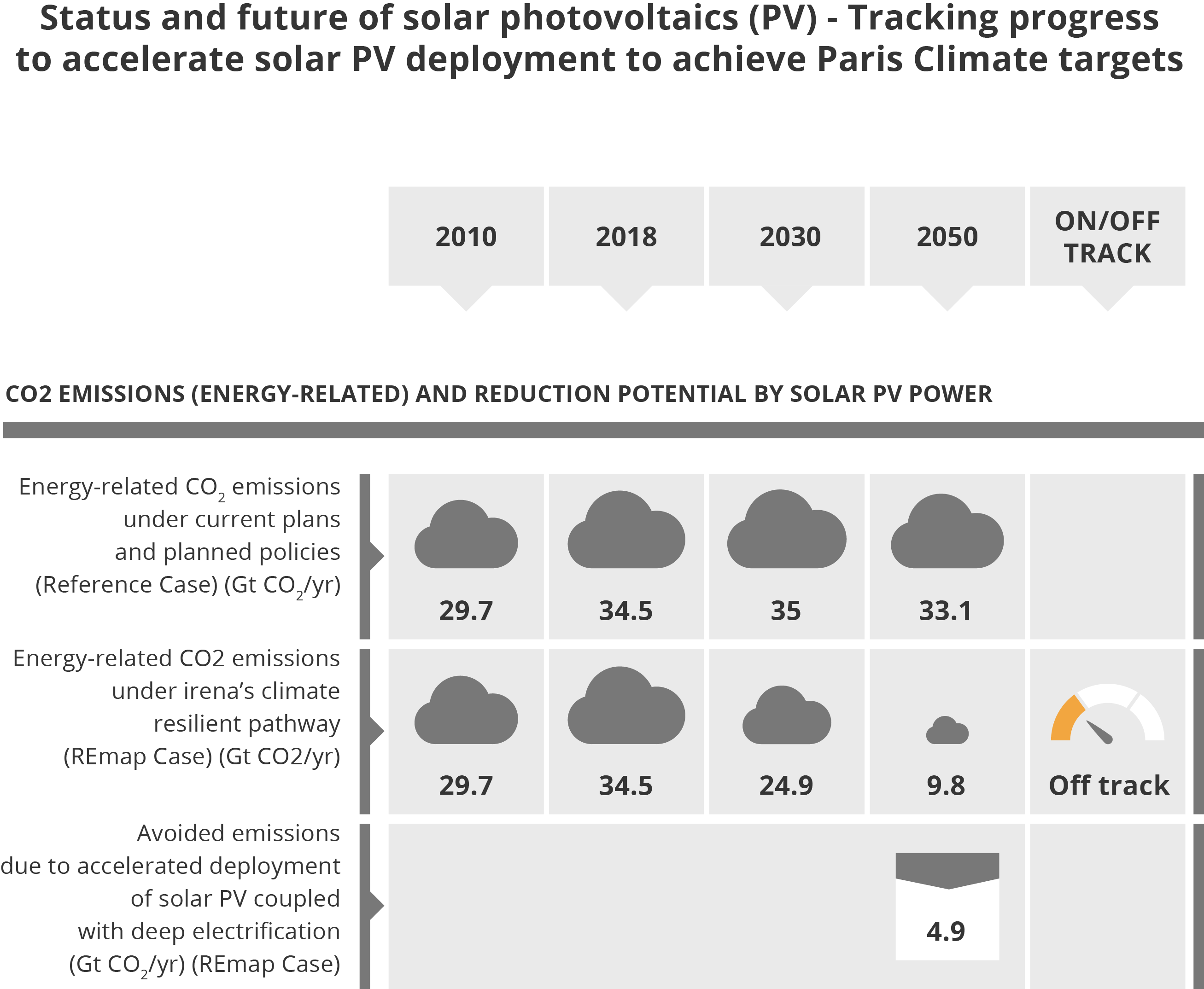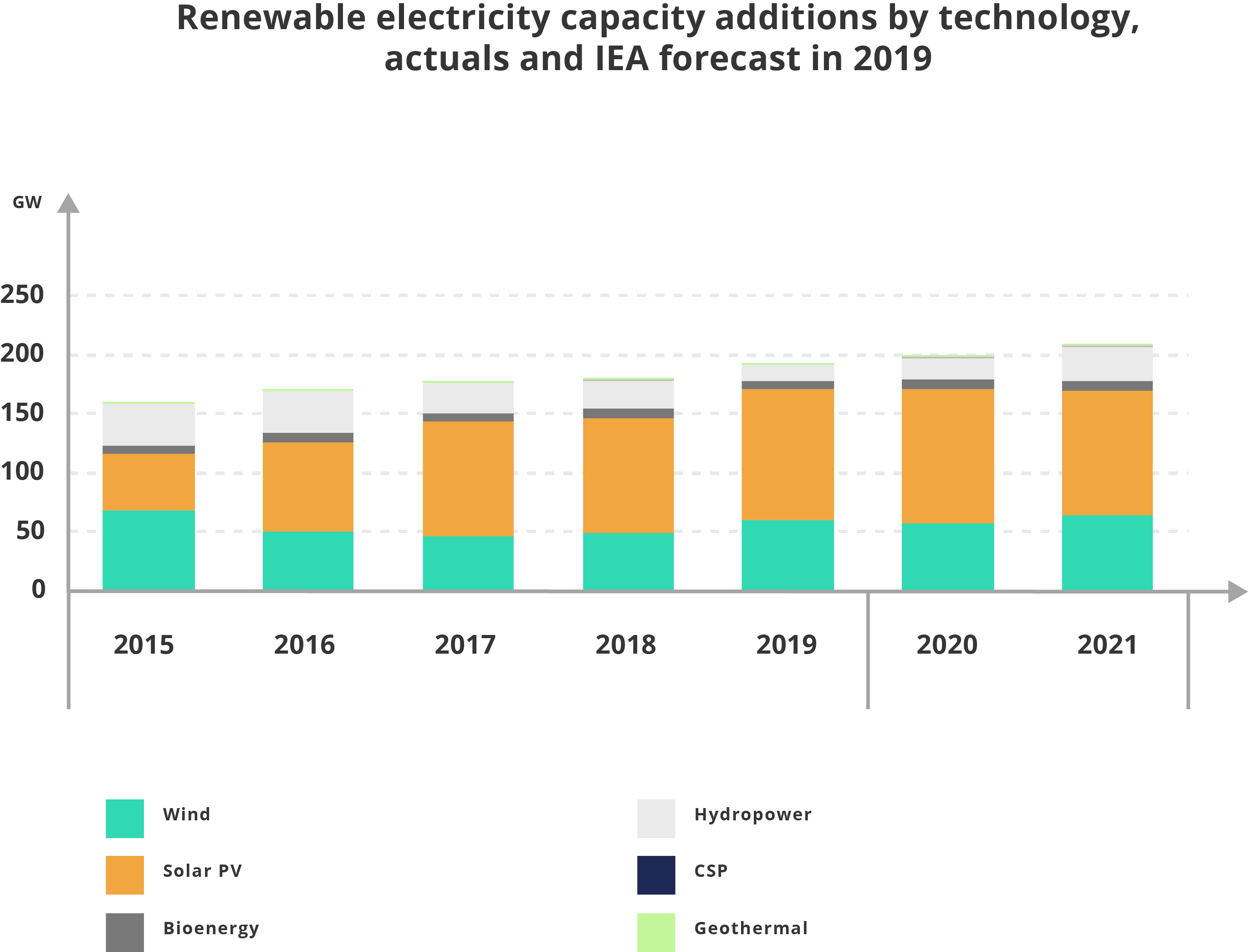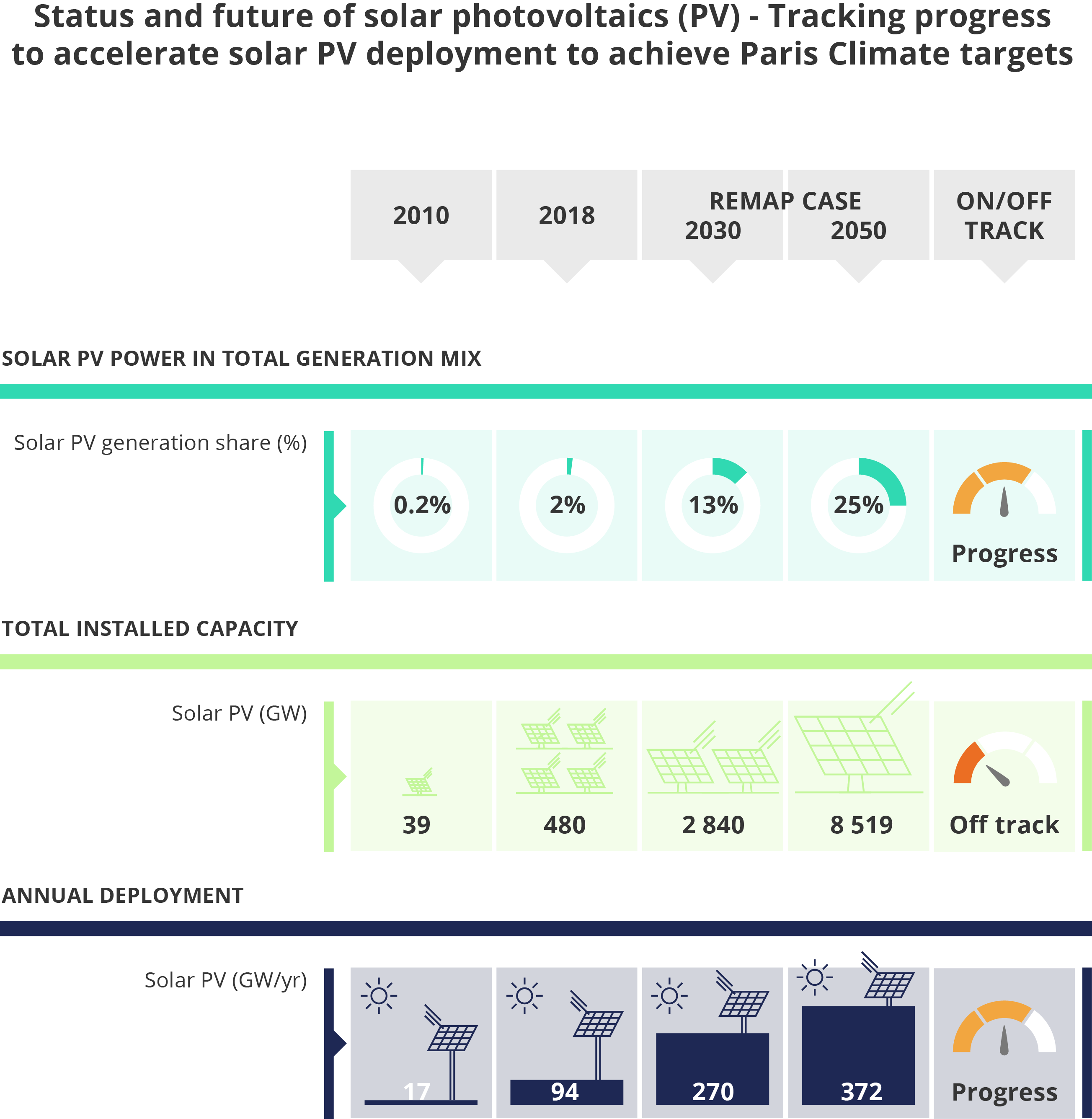Solar technology conquers the energy market

The demand for clean energy is skyrocketing and will continue to grow in the following years. The world is searching for an increased energy efficiency deprived of harmful environmental effects. The global solar PV market has been using that opportunity to its fullest. Photovoltaics has been placed amongst leading renewable technologies responsible for providing sustainable energy and diminishing carbon footprint and CO² emissions. This trend grows stronger every year.
Solar PV popularity
According to the latest IEA Renewable Energy Market Update Outlook (2020), wind and solar PV constitute 86% of global renewable capacity additions in 2020. The significant scale is followed by big money. The world photovoltaic market’s evaluation reached $53,916.0 million in 2018, with the forecast to attain $333,725.1 million by 2026 (Allied Market Research).
Solar PV sector growth accelerates almost in yearly periods, encompassing other national and regional markets. The chart below shows the scale of annual change in solar energy generation. From the late 1960s, there’s been an increasing trend for photovoltaic installations that generate more solar power with almost a year-to-year increase.
Some countries already have a strong solar PV sector in national power generation – over twenty of them reached operational capacity sufficient to cover at least 3% of their national energy demand by the end of 2019. In fifteen countries, photovoltaics enabled covering 5% of the demand in 2019. Globally, solar PV covered 2,8% of electricity generation last year (evwind.es).
Two main factors are causing the accelerated advancement of photovoltaics. The first one is that solar and battery prices have been falling for quite some time now. This trend is confirmed by various research to continue in the following years. However, photovoltaic systems gain more popularity, not only because of a significant price drop. Solar PV technology is, above all, easily scalable and very flexible, which makes it capable of rapid adjustment to changing demands. It’s an example of a universal solution used on an industrial, commercial, and residential scale. The price drop made it available not only for huge enterprises but also for small-medium businesses and single households, allowing on-site generation and eliminating transfer losses.
It also takes sustainability to the next level. Solar PV systems are used in a variety of areas due to their wide range of applications. While solar-storage solutions are already quite popular, the global energy market expands the use of solar PV energy, merging it with other industry sectors. The Internet is buzzing about solar mobility and smart solar technologies, even solar smart cities. The last could easily represent an opportunity to finally transfer environmental-friendly actions from the individual to a global scale, especially in reducing carbon footprint and lowering CO² emissions. The International Renewable Energy Agency reports that PV alone can reduce emissions of carbon dioxide by 4.9 gigatonnes in 2050. That number would constitute 21% of the emission reductions’ total potential within the energy sector (IRENA 2019).

Source: IRENA, Future of Solar PV, 2019
Shifting cities and urban areas towards smart technologies requires increased energy efficiency, reliable energy sources, and is essential for the global energy transition. Especially when cities become the main human hubs due to the international trend of urban migration, expanding cities will need extensive power supplies. Scaling huge plants to cover increasing demand entails tremendous amounts of money. Instead of that, smart cities can use solar energy as an efficient approach for energy transformation. Solar PV gives a chance to generate energy not only on a commercial or industrial scale. Numerous small-scale installations for households and small businesses unlock the potential for various energy sources capable of supplying the grid with necessary amounts of clean energy.
This trend is particularly explicit in Europe, where small solar systems highly support energy transition. This outcome is enabled by various governmental and commercial programs oriented towards building integrated clean energy supply based on Distributed Energy Systems (DERs). Small PV-storage systems, such as rooftops PV, are the cornerstone of the global energy system founded on ‘4D’: digitalization, decarbonization, distribution, and democratization. What makes them click?
Technology solutions unlock solar PV potential
The huge potential of photovoltaics lies in their flexibility. Solar systems can be organized as both massive industrial systems or small household installations. Regardless of the case, they keep a high level of scalability. They’re also flexible enough to create advanced energy systems, linking together inverters, battery storage installations, EVs, grids, and connectivity solutions. The solar-plus-storage trend seems to attract a growing number of enthusiasts, supporting grid resilience (Deloitte, 2020). That is crucial for further development and orchestrating adaptations to the new market demands.
Software plays an important role here, acting as a binder for all individual solutions. Various operational and management platforms organize energy generation, storage, management, and consumption, making it available for every power producer, even the smallest. User-friendly applications allow PV owners to participate in the local and national energy supply chain to benefit each engaged party. Those platforms are easy to use and ensure comprehensive management over the energy cycle.
Hardware technology rushed forward and now offers upgraded systems as well. Currently, PV panels are capable of generating energy even with a limited amount of sunlight. That makes them far more efficient and productive, even on a small scale in residential installations, and opens new markets for this type of solar PV, especially the regions with fewer sunny days during the year. Increased durability extends the PV life cycle, and new materials decrease the chances of malfunctions, which sets PV systems as an affordable and efficient source of clean power generation. The significant and proceeding price drop and expanded general availability drive further demand for solar PV, particularly residential installations. The result is a stable annual growth of the solar PV market.
According to the International Energy Agency report, in 2019, the additions of solar PV capacity raised by almost 14%, dominating renewables growth in general with a strong forecast to hold that tendency for 2020 and 2021.

Source: IEA, Renewable Energy Market Update – Outlook for 2020 and 2021, 2020
The new record of 110 GW of global capacity in 2019 has been set despite the major decline in Chinese PV additions, the biggest solar market.

Source: IEA, Renewable Energy Market Update – Outlook for 2020 and 2021, 2020
Europe’s solar PV capacity nearly doubled in 2019, attaining 17 GW, the highest record since 2012, compared to 10 GW installed in 2018. Compared to others, 2019 European PV assets had a substantial share of commercial and residential PV capacity that consisted of a majority of Europe’s capacity. As software and hardware advancements boost the availability, distributed PV systems gain quite a lot of attractiveness. They’re starting to play a significant role in the energy mix in China, Europe, and the United States. However, photovoltaics has to face new challenges.
Risks for solar PV development
Lowering prices, increasing popularity and availability, opening new markets – undoubtedly, bright sides of the solar PV sector development brought some unexpected difficulties. Market saturation implied the increase of required competitiveness directed towards component producers. Combined with a fairly high level of uncertainty and lack of established regulations, it leads to slim margins for manufacturers.
There’s also the main disruptor after 2019 – the Covid-19 pandemic that is presumed to delay all renewables deployment. Uninterrupted growth of the solar PV sector has been highly affected by the virus escalation and general economic slowdown. All the quoted data charts showing updated forecasts for 2020 and 2021 indicate a significant decline in 2020 compared to the previous growth level. Uncertainty and economic crisis caused a major back down and stoppage of ongoing and planned PV investments in utility-scale photovoltaics. The continued projects are straitened due to the lockdown and obligatory social-distancing that successfully limited personal contact and hindered access to buildings.
Distributed residential and commercial solar PV is even more affected. The economic downturn brought uncertainty about the financial situation, which may result in postponement or even abandoning investments towards PV installations. Also, the energy demand has lessened since industries consumed much less energy during the lockdown. Many of them created new formulas for work organization, such as the service sector, which shifted towards the home office instead of on-site office work. This change in the working model reduced the amount of energy necessary for companies to operate.
However, investment issues are not the only challenge for the solar PV market that should consider the real demand for the next few years. Currently, we observe overcapacity of manufacturing. When factories stopped during the lockdown, they could easily operate with the stored supply. There were no major delivery brakes. The overproduction of PV hardware will sustain the price drop, especially at the moment when the real demand is affected by the economic effects of the Covid-19 pandemic.
Last but not least – regulations. Apart from the global agreement of switching to renewable energy, each country and region regulates its policy towards renewables and solar PV. But many have barely a nugget of the idea for renewable energy strategy rather than full-formed regulations, as this technology is still perceived as a novelty. The financial side is also an issue. National energy transition always involves enormous costs that may be difficult to handle in the economic crisis caused by Covid-19. Solar PV becomes one of the strongest cornerstones for a sustainable energy system. The earlier countries will recognize it, the easier that transition will proceed.
The future of solar PV
The IRENA forecast for the future of solar PV looks bright:

Source: IRENA, Future of Solar PV, 2019
Global focus on fighting the climate crisis and meeting decarbonization goals will accelerate the energy transition and shift to renewable energy. This will result in the increasing significance of solar PV and growing share of PV in the global energy mix. According to the IRENA forecast, it can reach 25% of the total energy generation by 2050, producing even 8 500 GW.
Increased availability will sustain price dropping as the technology will spread and gain popularity on utility, commercial, and residential scale. The last two may result in a growing number of DERs flexible enough to embrace new technological combinations of PV, energy storage, EVs, etc. The ultimate effect? Clean and, hopefully, cheap energy.
Sources:
IRENA, Future of solar photovoltaic, 2019
IEA, Renewable Energy Market Update – Outlook for 2020 and 2021, 2020
Deloitte, 2020 Renewable Energy Industry Outlook: A midyear update, 2020
contact us
Need expert guidance on your next energy project?
Reach out to us and discover how Codibly can offer tailored solutions to drive your business.